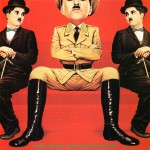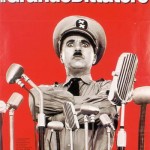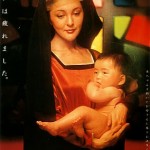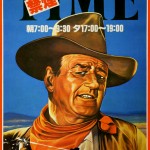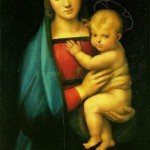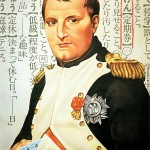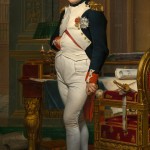Discussion and Conclusions
Research question one asks what semiotic code can be determined from a textual analysis of Japanese manner posters from 1976-1982. After extracting the history and cultural values embedded in the posters, several factors can be addressed when determining a common code. While each poster presents its own unique story, all four artifacts share a universal display of global membership in an increasingly competitive, 1970s to 1980s Japanese economy by using iconicity. Common elements of the code at work in the four manner posters are the presence of iconicity, signified suggestions of public manner etiquette, and the appropriations of earlier art forms. Additionally, these posters show the evidence of a bizarre sense of humor, strategic use of bold colors, and pithy text.
Research question two asks what communication function Japanese manner posters serve. Given the code behind Japanese manner posters, these artifacts help a traveling audience gauge why signs work to create certain realities (Whorf, 1956). A sign does not simply refer to a thing hanging on a wall, but rather anything that stands for something else (Chandler, 2007). Mary is Tired promotes a reading of people in crowded, public contexts.
The specific time period of these posters significantly affects how the audience encounters the images. The four chosen iconic posters have a greater impact during an increasingly improving Japanese economy during the 1970s to 1980s. Today, if one were to travel to Japan and ride the Tokyo public transportation, manner posters would still be visible. However, today’s Japanese manner posters would appear differently in comparison to Kawakita’s line of work from the 1970s and 1980s. While today’s manner posters do not employ international connections of iconicity in ways that vintage manner posters did, the messages about cultural values remain salient.
While the posters successfully fulfilled the function of maintaining social order by appealing to iconic, rhetorical devices during the 1970s and 1980s, questions of appropriateness in Kawakita’s artistic choices still remain unanswered. One culture may regard manner posters as normal while another culture may see manner posters as too strict, comical, or plainly offensive. Undoubtedly, the concept of manners enters an equivocal space as it lies heavily in the eyes of the mannered or unmannered beholder.
References
Barthes, R. (1957). Mythologies. New York, NY: Hill and Wang.
Barthes, R. (1974). S/Z. New York, NY: Hill and Wang.
Barthes, R. (1988). The semiotic challenge. Los Angeles, CA: University of California Press.
Benson, J. (2010). Intellectual property and cultural appropriation. Reviews in Anthropology, 39, 201-228.
Bonnell,V. (1997). Iconography of power: Soviet political posters under Lenin and Stalin. Los Angeles, CA: University of California Press.
Bownes, D. & Green, O. (2008). London Transport posters: A century of art and design. Burlington, VT: Lund Humphries.
Carter, E. (2008). Posters for the people: Art of the WPA. Philadelphia, PA: Quirk Books.
Carter, K. (2010). Unfit for public display: Female sexuality and the censorship of fin-de-Siècle publicity posters. Early Popular Visual Culture, 8,107-124.
Chandler, D. (2007). Semiotics: The basics. New York, NY: Routledge.
Collins, B. (1985). The poster as art: Jules Cheret and the struggle for the equality of the arts in late nineteenth-century France. Design Issues, 2, 41-50.
Dalbello, M. & Shaw, M. (2011). Visible writings: Cultures, forms, readings. New Brunswick, NJ: Rutgers University Press.
David, Jacques-Louis. (1812). Napoleon Bonaparte in his Study at the Tuileries.
Retreived from
Doh, C. S. & Inoguchi, T. (2009). Avowed happiness in Confucian Asia: Ascertaining its distribution, patterns, and sources. Springer Science and Business Media, 92, 405-427.
Doi, T. (1973). The anatomy of dependence. New York, NY: Kodansha America Inc.
Hamilton, J.R. (1965) After About With Cancer. Retrieved from http://www.lifemagazineconnection.com/index.php?main_page=product_info&cPath=37_70&products_id=1569
Hebdige, R. (1979). Subculture: The meaning of style. Oxon, UK: Routledge.
Jakobson, R. (1968). Language in relation to other communication systems. In R. Jakobson (Ed.), Roman Jakobson selected writings: Word and language: Vol. 2 (pp. 697-708). The Netherlands: Mouton and Co. Printers, The Hague.
Kawakita, H. (2008). Original! Japanese manner posters. Tokyo, Japan: Graphicsha Company.
Leeds-Hurwitz, W. (1993). Semiotics and communication: Signs, codes, and cultures. Hillsdale, NJ: Lawrence Erlbaum Associates.
Levi Strauss, C. (1978). Myth and meaning: Cracking the code of culture. New York: Shocken Books Inc.
Life Magazine. (1965). After a Bout with Cancer.
Oetzel, J. & Ting-Toomey, S. (2003). Face concerns in interpersonal conflict: A cross- cultural empirical test of the face negotiation theory. Communication Research, 30(6), 599-624.
Roy Export. S.A.S. (1940). The Great Dictator ©. Retrieved from http://www.movieposterdb.com/poster/21a01bf8
Sanzio da Urbino, Raphaello. (1505). Madonna dell Granduca.
Retrieved from
http://www.artchive.com/artchive/R/raphael/madonna.jpg.html
Shueisha Incorporated. (2012). Women’s magazines. Retrieved from http://www.shueisha.co.jp/english/magazines/
Tokyo Metro Corporation. (2012). マナーポスター. Retrieved from http://www.tokyometro.jp/corporate/csr/society/manner/index.html
West Japan Railroad Company. (2012). 駅や車内でのマナー啓発. Retrieved from http://www.westjr.co.jp/railroad/service/manner
Whorf, B. (1956). Language, thought, and reality. New York, NY: The Massachusetts Institute of Technology and John Wiley & Sons, Inc.
Woodward, I. (2001). Domestic objects and the taste epiphany. A resource for consumption methodology. Journal of Material Culture, 6(2), 115-36.
Woodward, I. (2007). Understanding material culture. Thousand Oaks, California: Sage.
